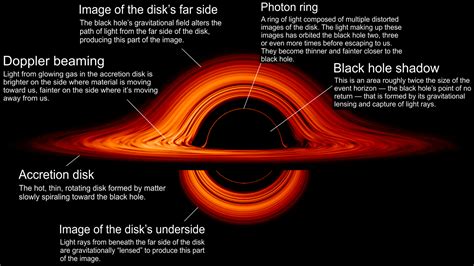A recent observation by astronomers has provided a thrilling glimpse into the dynamics of our cosmos: a black hole’s awakening in real time. This phenomenon, reported through meticulous tracking of the galaxy SDSS1335+0728’s unexpected brightness surge, is more than just a spectacle; it’s a gateway to understanding the enigmatic behaviors of black holes and their impact on galactic evolution. Such unprecedented observations bring forth myriad questions and rich discussions among astronomy enthusiasts and experts alike, shedding light (both literally and metaphorically) on the intricate dance of celestial bodies.
The timeline of cosmic events is often a topic of intrigue and confusion. As one commenter aptly pointed out, a comprehensive listing of the timeframes for various cosmic incidents would be a fascinating project. In the vastness of the universe, these events span different scales—mere seconds for a supernova explosion, to millions of years for galactic rearrangements caused by black holes. Understanding these scales not only enhances our appreciation of these phenomena but also helps us contextualize them within the fabric of our universe’s history.
Another stimulating discussion is the gravitational impact a black hole has on its host galaxy. One user highlighted the process through which a black hole can rearrange a galaxy over millennia, suggesting that massive black holes at the centers of galaxies influence the spiral structure observed in galaxies like our Milky Way. While it’s broadly accepted that black holes play a crucial role in galactic dynamics, it’s vital to correct some misconceptions. A massive central black hole doesn’t necessarily originate from a supernova; such an event cannot create a black hole of that magnitude.
This leads us to the precision and relativity of astronomical measurements. It’s fascinating to consider, as highlighted by several users, that even with advanced technology, cosmological dates and distances come with considerable tolerances. For instance, the estimated age of the universe is approximately 13.7 billion years, with a margin of error of 20 million years—a substantial variance by everyday standards but remarkably precise in the context of cosmology. Similarly, the size estimations of galaxies showcase the challenges faced in measuring vast cosmic distances accurately.
The observed awakening of the black hole in SDSS1335+0728 spurred debates about the terminology used in communicating such findings. A more scientifically accurate phrase might be ‘transitioning from dormant to actively feeding,’ as suggested by some users. This event didn’t create a black hole but indicates heightened activity as the black hole consumes nearby matter, emitting significant energy in the process. This distinction underscores the importance of accurate scientific communication, ensuring that public interpretations align with actual observations.
Additional layers of complexity arise when we consider the mechanisms of matter interactions near black holes. Hawking Radiation, a process where virtual particles split at the event horizon, leading to a slow drain of the black hole’s energy, is one such mechanism. Moreover, the merging of black holes and the resultant emission of gravitational waves represent some of the most energetic events in the universe, detectable by sophisticated instruments like LIGO, which recently measured such occurrences with astonishing precision.
In the midst of these grand discussions on cosmic phenomena, the interplay between theory and observation remains crucial. For instance, while we theorize about galaxies being shaped by their central black holes, observations like those from the European Southern Observatory’s Very Large Telescope provide empirical data to support or refine these theories. The recent awakening of the black hole in SDSS1335+0728 not only validates existing models but also poses new questions for further exploration and understanding.
The concept of ‘real-time’ observation in astronomy often brings nuanced debates about the nature of time and light travel. Some users pointed out that cosmic events witnessed through telescopes are essentially historical occurrences, given the time it takes for light to travel vast distances. Therefore, the term ‘real-time’ in celestial observation is used relatively, acknowledging that while we observe these events now, they happened millions of years ago. This interplay of time, light, and observation captivates the human imagination and enhances our comprehension of the universe’s temporal dimensions.
In conclusion, the observation of a black hole’s awakening is both a marvel and a scientific milestone. It propels discussions about the nature of cosmic events, the precision of astronomical measurements, and the dynamics of matter interactions in space. As we continue to develop more advanced observational technologies, each new finding further unravels the mysteries of the cosmos, bringing us closer to understanding our place in this expansive universe. These discussions remind us that while our universe may be ancient and vast, our curiosity and quest for knowledge remain ever vibrant, guiding us through the celestial corridors of discovery.


Leave a Reply